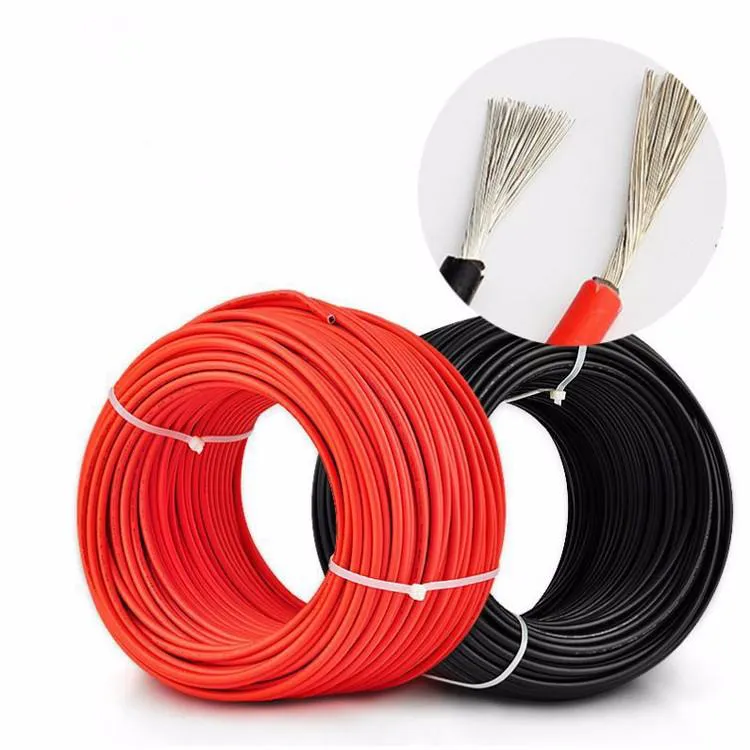Time: 2025-04-21 13:16:29 Source: Henan Province Jianyun Cable Co., Ltd.

A photovoltaic cable, often called a solar cable, is a single-core, insulated cable specifically engineered for use in photovoltaic systems. It connects solar panels to inverters, charge controllers, or batteries, carrying direct current (DC) generated by solar panels. PV cables are designed to handle high DC voltages (up to 1.5 kV) and currents (e.g., 30–50A for 4–6 mm² cables), with insulation that resists UV radiation, extreme temperatures, and moisture, ensuring long-term reliability in outdoor environments.
Unlike standard cables, PV cables meet stringent standards like EN 50618 (Europe) or UL 4703 (USA), ensuring they’re halogen-free, flame-retardant, and durable for 25+ years, matching the lifespan of solar panels. They’re typically double-insulated to enhance safety in high-voltage DC systems. A PV cable is like a lifeline for a solar system, channeling energy from the sun’s “heart” (panels) to the system’s “brain” (inverter), braving the elements to keep the power flowing.
PV cables are built for durability, safety, and efficiency in solar applications, featuring specific materials and designs to handle DC power and harsh conditions. Their construction is summarized in the table below:
| Component | Description | Purpose |
|---|---|---|
| Conductor | Tinned copper, stranded (Class 5) | Resists corrosion, ensures flexibility |
| Insulation | XLPE (Cross-Linked Polyethylene) | Withstands UV, heat (-40°C to +120°C) |
| Outer Sheath | Halogen-free polymer (e.g., XLPO) | Flame-retardant, weather-resistant |
| Cross-Section | Typically 4 mm² or 6 mm² | Handles currents of 30–50A |
| Voltage Rating | Up to 1.5 kV DC (1 kV AC) | Suitable for high-voltage DC systems |
The tinned copper conductor prevents oxidation in humid conditions, with Class 5 stranding (per IEC 60228) ensuring flexibility for installation. XLPE insulation offers superior thermal resistance (up to 120°C) and UV stability compared to PVC, while the halogen-free outer sheath (often XLPO—cross-linked polyolefin) minimizes toxic emissions during fire, meeting safety standards like EN 50618. PV cables are often double-insulated, with insulation and sheath thicknesses of 0.7–1.0 mm each, providing extra protection against abrasion and electrical faults. This construction makes PV cables like a rugged hiker’s jacket, shielding the core from the elements while staying flexible for the journey.
Photovoltaic cables are primarily used in solar power systems, from small residential setups to large-scale solar farms, ensuring safe and efficient energy transfer in challenging outdoor conditions. Key applications include:
PV cables are designed for DC applications but can be used on the AC side (e.g., inverter to grid) if rated appropriately (e.g., 1 kV AC). They’re not suited for indoor low-voltage AC wiring, where cables like NM-B are used, nor for high-power industrial applications, where SWA cables are preferred. PV cables are like the arteries of a solar system, channeling energy through harsh outdoor “weather” while keeping the system alive and safe.
A photovoltaic cable is a specialized single-core cable for solar systems, designed to connect panels to inverters or batteries, handling DC voltages up to 1.5 kV and currents of 30–50A. Constructed with tinned copper conductors, XLPE insulation, and a halogen-free sheath, PV cables resist UV, heat, and moisture, meeting standards like EN 50618 for 25+ years of reliability. Used in residential, commercial, and off-grid solar setups, they ensure safe, efficient energy transfer in harsh outdoor conditions. Understanding PV cables helps in building durable solar installations that harness the sun’s power effectively.